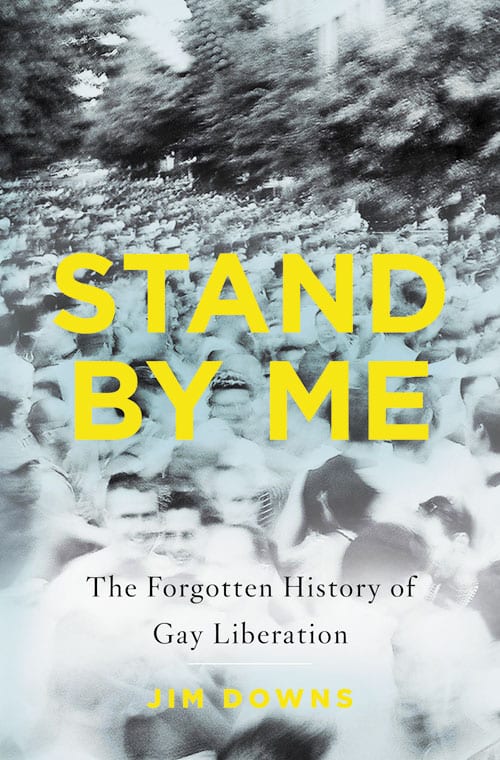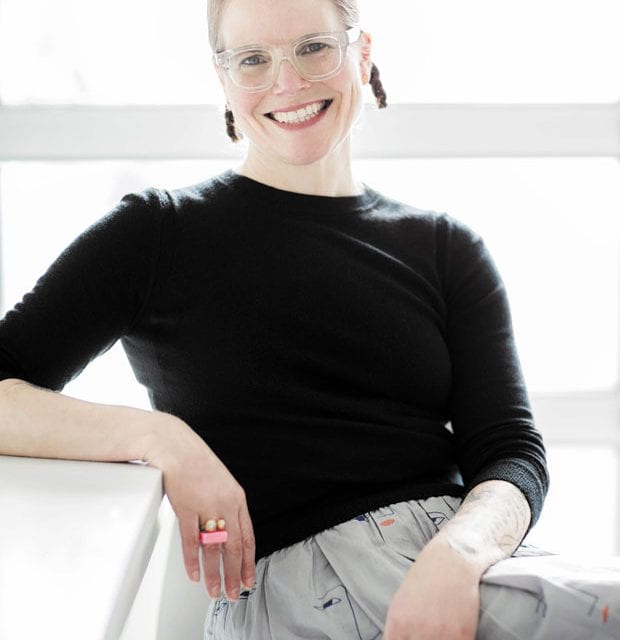Lesbian author examines swimming from all angles

The Joy of Swimming by Lisa Congdon (Chronicle Books 2016); $18.95; 141 pp.
 People say you’re all wet.
People say you’re all wet.
Maybe that’s not the nicest thing you’ve ever heard, but hey! If something’s true, it’s true, right? Yep, you love being in a pool, lake, pond, the ocean, a puddle, it doesn’t matter. And in The Joy of Swimming by Lisa Congdon, you’ll meet like-minded people in swimsuits.
At the tender age of eight, Lisa Congdon learned to love swimming when her mother signed her up for swim team near their California home. It was fun, but it was work, and her interest in swimming declined: life got in the way, school demanded time, injuries happened. It wasn’t until college, after she came out as a lesbian, that Congdon resumed the sport in earnest, and it connected her to the better parts of her life.
Swimmers, as she shows in this book, come in all shapes, sizes and ages. Gertrude Ederle, for instance, was just 20 years old when she swam the English Channel in under 15 hours, a record she held for a quarter-century. Johnny Weissmuller, who later played Tarzan in the movies, was the first person to swim the 100-meter freestyle in less than a minute.
Roxanne Winston thinks more black swimmers should “feel inspired to join the sport.” Kimberly Chambers almost lost her leg to “a freak accident,” but she still swims. Chel Micheline finds that being in the water frees her from spina bifida.
But swimming isn’t just about a cool dip in the lake. Dog paddling can be embarrassing (unless, of course, you’re a dog!), so you’ll want to know a few basic strokes, the science behind and the history of which Congdon explains.
You’ll learn a “very brief history” of swimming pools here, too, including where the largest one is located; you’ll read an itsy-bitsy bio on the bikini, and you’ll get quick facts on swimming and the Olympics.
Find out why you’ll want to cover your eyes if you visit an Icelandic locker room. See how even Michael Phelps is slow, compared to a sailfish. Get the real definition of a “swimming hole.” And find out why some people take bandages along when visiting a public pool in Japan.
Seriously, can you ever have a summer without at least one great big cannonball, dead-center in the water? If your answer is to the negative, then The Joy of Swimming is a perfect poolside book for you.
Using old ads, interviews, and her own drawings as illustration, author Lisa Congdon offers readers a bit of quirk for their deck chair. This has the feel of a sketch book or a haphazardly-kept scrapbook with mini-memoirs of the famous and never-famous, trivia, Olympic facts, statistics, and random thoughts. That messiness is really appealing, and you’ll come to love this book after a few laps around its pages.
Dip your toes in if you dare, or just dive right in. The water’s fine, and so is this book; for mermaid, athlete, or mere fans of the old waterin’ hole, The Joy of Swimming will make a big splash.
— Terri Schlichenmeyer
Rediscovering lost — to some — LGBT history
Stand by Me: The Forgotten History of Gay Liberation by Jim Downs (Basic Books 2016); $27.99; 262 pages
 You had no idea. How could you know?
You had no idea. How could you know?
No one ever told you, nobody sat you down to explain what was what. You were blissfully unaware, kept in the dark for far too long, but read Stand by Me: The Forgotten History of Gay Liberation by Jim Downs, and you may see the light on a few things.
Years ago, when he was a college student, Downs spent evenings with his best friend in a back room in the William Way Lesbian, Gay, Bisexual and Transgender Community Center in Philadelphia, poring through archives. Then, he had no idea of the value of the old newspapers and articles he’d found but after seeing a documentary on the 1970s and AIDS, he suddenly understood.
Bothered by conclusions drawn in the movie — specifically, what he felt was a focus on promiscuous sex — he returned to the archives. It was there that he saw how much of LGBT history is unknown or misunderstood. His research led to this book.
One of the more shocking things he discovered was “the largest massacre of gay people in American history.”
It happened on June 23, 1973 in New Orleans: A group of 120 gay, lesbian and straight worshippers were holding a church service on a Sunday night on the second floor of a building in the French Quarter. They were members of the Metropolitan Community Church, which had been established so that LGBT individuals had a safe, inclusive place to worship. On that night, they were raising their voices in song when a still-unknown person threw flammable liquid on the stairs, trapping the congregation. Thirty-two people died that night.
Downs writes of a New Yorker with a “vision” of a bookstore-slash-gathering-place for “homophiles” to mingle and share ideas, rather than their bodies. He explains how a soon-to-be-famous writer was relentless in his search for gay history in Nazi Germany. He examines how activism and gay politics spurred the creation of gay newspapers, and how LGBT publications affected “people of color” and domestic workers.
Coming full-circle, he shows how gay churches and newspapers supported gay men in prison.
In any history, there’ll always be surprises, facts and tales that are forgotten or ignored until someone finds and reveals them anew. And that’s exactly what author Jim Downs has done here in Stand by Me.
Starting with upset over what he perceived to be a simplistic premise for a documentary, Downs moves on to a story that was largely ignored by nationwide news outlets, then to activists and beginnings of an LGBT press. His narrative encompasses the years roughly prior to Stonewall through about the late 1970s, and it includes a number of coincidental connections that are nicely revealed.
This book is informative, sometimes horrifying, interesting and, unlike your old high-school history books, never dry.
Older LGBT readers may not see anything new or shocking here, but younger gay men and lesbians will truly find some eye-openers. If you don’t know what you don’t know, Stand by Me will give you some ideas.
— Terri Schlichenmeyer
This article appeared in the Dallas Voice print edition September 30, 2016.

